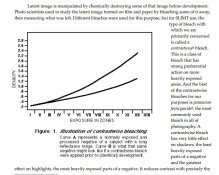I’m sure I’ve seen something about this somewhere but lost the link.
I know to some, it will sound like pure alchemy and sacrilegious.
But.
The thinking goes like this:
Push processing raises contrast.
It should be possible to control and lower that contrast, while still getting the “speed advantage”(*) of pushing (I’m fully aware that some people want the higher contrast).
This could be done by starting push development, and then at some predetermined point replace the normal developer with a highly diluted one, or otherwise compensating one.
This would of course theoretically continue development of any underdeveloped shadow detail, while leaving highlights alone for the most part.
My questions is: What is this technique called and does anyone have links to any online recourses or know of books where it is explained in detail?
Pre-development is relatively well known in C-41, but “post-development” doesn’t really return anything useful on Google.
Edit. (*) “Speed advantage” in quotation marks. I’m fully aware it’s not real speed and you’re basically just skewing the curve with the foot as a “hinge”. Trick would be to “unhinge” the foot, so to speak.
I know to some, it will sound like pure alchemy and sacrilegious.
But.
The thinking goes like this:
Push processing raises contrast.
It should be possible to control and lower that contrast, while still getting the “speed advantage”(*) of pushing (I’m fully aware that some people want the higher contrast).
This could be done by starting push development, and then at some predetermined point replace the normal developer with a highly diluted one, or otherwise compensating one.
This would of course theoretically continue development of any underdeveloped shadow detail, while leaving highlights alone for the most part.
My questions is: What is this technique called and does anyone have links to any online recourses or know of books where it is explained in detail?
Pre-development is relatively well known in C-41, but “post-development” doesn’t really return anything useful on Google.
Edit. (*) “Speed advantage” in quotation marks. I’m fully aware it’s not real speed and you’re basically just skewing the curve with the foot as a “hinge”. Trick would be to “unhinge” the foot, so to speak.
Last edited:



